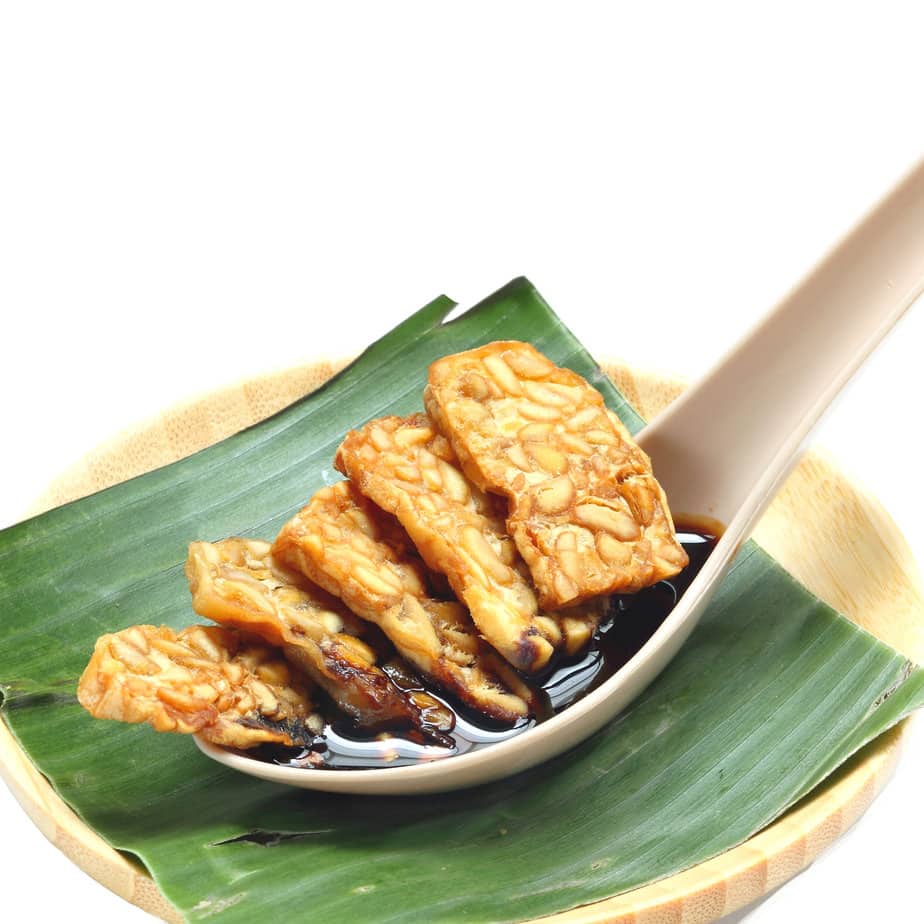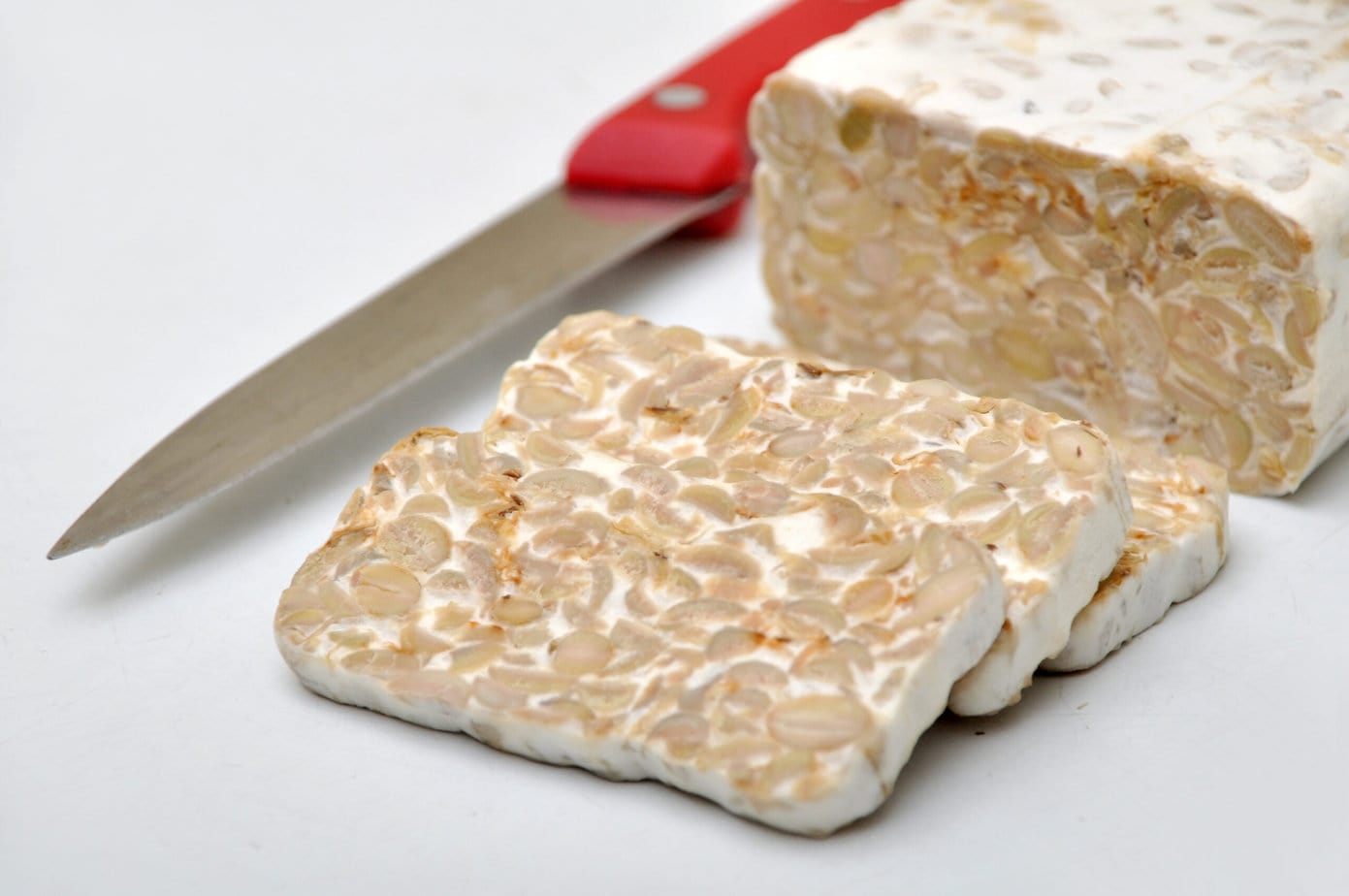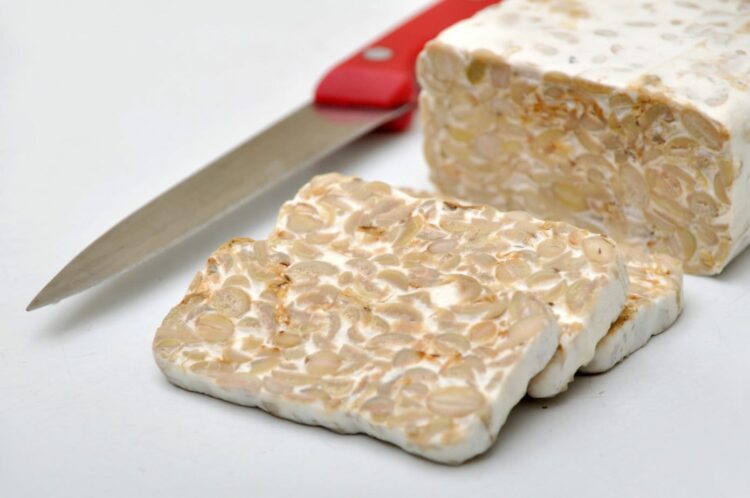Tempeh is a soy-based food believed to have originated in Indonesia thousands of years ago. The earliest recorded use of the word “tempeh” dates to the early 19th century, in a volume of Javanese history.
Since the 1970s, when it became readily available in the West, tempeh has become a popular meat substitute in vegetarian and vegan cooking.
What is tempeh?
Tempeh is a firm, cake-like product made from cooked, lightly fermented soybeans. Fermentation helps break down phytic acid in soybeans, making tempeh’s starches easier to digest. After fermentation, the soybeans are pressed into a patty—similar to a very firm veggie burger—or into a block.

How to cook tempeh
Try adding tempeh to a stir-fry in place of tofu. To replace ground beef, crumble it, finely chop it, or even grate it on a box grater and stir it into soups.
You can bake it in a casserole or give it a crisp, golden exterior by pan-frying. Or grill it. For slabs or cubes, its firm texture means you shouldn’t slice tempeh into pieces that are too wide, or it won’t cook through evenly.
Many recipes recommend softening tempeh before cooking it or adding it to a dish. Generally, this means steaming or simmering for about 10 minutes.
Although you can eat it straight from the package, this step improves the flavor and helps it absorb seasonings and sauces.
What does tempeh taste like?

Tempeh is mildly savory with a nutty, earthy flavor that’s often compared to mushrooms.
It provides a neutral base for almost any dish, readily taking on the flavors of sauces and condiments. You can even season tempeh to taste like bacon or sausage.
Where to buy tempeh?
Tempeh can be found in most natural food stores and well-stocked grocery stores. It’s usually kept near the tofu in the produce or dairy section.
How to store tempeh?
You can keep store-bought tempeh in its original packaging in your refrigerator for up to 10 days. Uncooked tempeh can be frozen for up to three months. Store leftovers in an airtight container in the refrigerator for up to three days.
Tempeh, tofu, or seitan: what’s the difference?
Like tofu, tempeh is made from soy, but it has more flavor on its own. The production process differs from tofu in that it starts with whole soybeans rather than soy milk, which makes tempeh less processed than tofu.
You can see the beans in the patty or block, held together by the beneficial probiotic mold used in fermentation. Unlike soft tofu, tempeh has a very firm texture and doesn’t crumble easily. Both soy products readily absorb the flavors of sauces and marinades.
Often called “wheat meat,” seitan is essentially processed wheat gluten, so it can never be gluten-free. Seitan begins as a flavorless dough, but producers add spices and seasonings before forming it into loaves to sell. It’s the main ingredient in many plant-based meat alternatives.
Different types of tempeh
There are many commercial brands of tempeh on the market; it’s sometimes flavored with vegetables or other grains.
If you avoid soy or simply enjoy experimenting, you can find tempeh made using the same process with other beans, such as black beans, chickpeas, or lentils.

Ingredients
- 400 g dried soybeans use whole beans
- 4 tablespoons rice vinegar
- 0.75 teaspoons tempeh starter (Rhizopus; see notes)
Instructions
- Soak the soybeans overnight, or for at least 8 hours. Drain.400 g dried soybeans
- Rinse the soybeans several times with fresh water, then place them in a large pot and add fresh water to cover by about 2.5 cm above the beans.
- Cover and cook over medium heat.
- Keep an eye on the pot. If it starts to boil over, set the lid slightly ajar to let more steam escape, then reduce the heat. Once the excess steam has dissipated, cover the pot again.
- Check the water level from time to time. Begin testing the beans for doneness after 30 minutes. Add more water if needed to cook the beans longer. Soybeans can take 30 minutes to 1 hour to cook.
- Cook until the beans are nearly done (about 80%), then add the vinegar. Continue cooking until tender but not mushy.4 tablespoons rice vinegar
- Once the beans are cooked, drain off almost all the water.
- After draining, return the pot to the heat to evaporate the remaining liquid. Do not dry out the beans; the liquid should simply be gone.
- Let the beans cool until they are about 35°C.
- Add the Rhizopus starter to the beans and mix well.0.75 teaspoons tempeh starter (Rhizopus; see notes)
If using a zip-top bag:
- Poke holes in the bag at 2 cm intervals all over. Divide the beans into your desired portions and pack them into perforated zip-top bags. Seal, then fold as needed to create an even, compact thickness. Spread the beans evenly.
If using a glass or ceramic dish:
- Set out the dish and a large plastic container.
- Spread the beans in an even layer in the dish. Place the dish, uncovered, inside the plastic container, close it, and keep in a warm place for 36 to 48 hours.
- After 36 to 48 hours (with either method), the spores should be fully developed and the tempeh is ready. Cut into smaller portions for storage, if you like.

